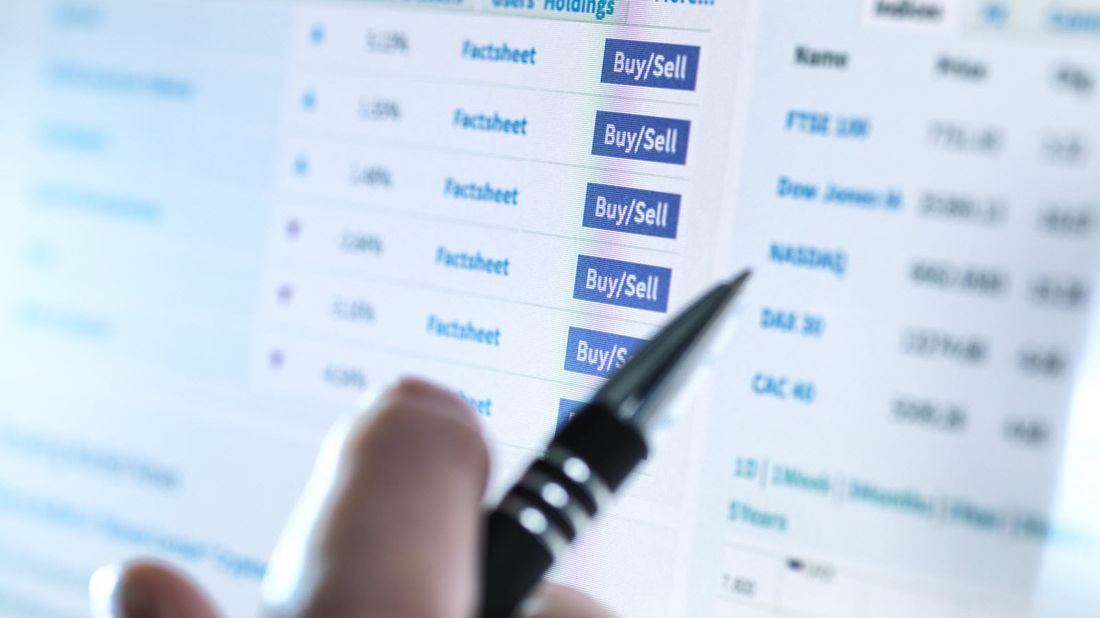Should You Wait for a Market Decline Before Investing?

Buy low, sell high.
It’s a worn-out investing adage that logically makes sense. And in case you haven’t noticed, the stock market is cruising in lofty territory and trading at all-time highs. We’re nearly a decade into the second-longest economic expansion on record, and some investors are naturally wondering if it’s too late to join the party. Surely at this point it’s impossible to “buy low”.
Here’s the thing, if “buy low, sell high” is your only hang-up, you might want to take a closer look at why you’re investing in the first place.
“Everywhere I go the thing I’m hearing is that people are no longer worried about growth, they’re worried about being the last person in,” says Brent Schutte, chief investment strategist at Northwestern Mutual. As such, people may be tempted to put a financial plan on hold until a better opportunity to join the party presents itself in the stock market. However, focusing on making a fashionable entrance or exit can lay ruin to a long-term financial plan.
“Investors shouldn’t jump into the market with the mindset that they are buying equities for anything other than the long-term,” says Schutte. “Despite all the press and time dedicated to the near-term investing prospects, long-term investing and prudent asset allocation are what drives financial success, even in the unfortunate situation you happen to be the last person buying into the market before it falls.”
For proof, let’s go back to October 2007.
THE WORST TIMING EVER
Someone, somewhere put a hefty amount of money into the stock market on Oct. 9, 2007. And why not? The S&P 500 and the Dow Jones Industrial Average had just notched all-time highs and were on a roll. A peek at the New York Times home page shows it was kind of a lackluster day as far as news goes – unless you consider Flo Rida’s release of his hit song “Low” a big deal. But overall, there weren’t any major, market-moving headlines that would spook investors en masse.
Unfortunately, that happened to be the day the stock market peaked, and it would only get uglier as the days and months passed with the market falling 20 percent by Sept. 12, 2008. The following Monday saw Lehman Brothers file for bankruptcy and stocks dove deeper into a tailspin — frightening headlines were aplenty that day. Lehman Bros. remains the largest bankruptcy filing in the history of the United States, and the Dow fell 4.5 percent that day, its largest one-day decline since Sept. 11, 2001.
It didn’t stop there. In the following months, U.S. stocks would lose more than 50 percent of their value. That person who invested on Oct. 9 couldn’t have had worse timing. Listening to nails scraping on a chalkboard would probably have been more appealing than checking in on that investment portfolio in the following months. Nearly 11 years later, this hypothetical person with awful timing is surely still managing a portfolio that’s in tatters, right? Not so.
“If you held stocks from the peak of the market on Oct. 9, 2007 until today, you would have more than doubled your money, which is a better return than any asset class out there,” says Schutte.
Put another way: Had you invested $10,000 in a fund that held every stock in the S&P 500 index on that day, it would have fallen in value to approximately $5,500 by February 2009. However, the US economy and markets began to push higher in the next month and by November 2012 you would have broken even. And if you let it sit, remained patient and stuck to your guns, that investment would be worth more than $23,600 today with dividends reinvested. That works out to an annual growth rate of about 8.15 percent.
“I hope that no one buying equities on Oct. 9 was going to need that money before March 2009 or even before November 2012,” says Schutte. “Those needs should have been met by less risky assets such as bonds or cash. Those who bought equities with the appropriate time horizon have been rewarded.”
You see, “buy low, sell high” sounds great at first glance, but in practice, it encourages excessive trading. You end up buying and selling at inopportune times while racking up fees in the process. Even the best minds in finance can’t call a market top or bottom; it’s a fool’s errand to try. Rather, when it comes to saving for long-term financial goals, keep a different mantra in mind: Time in the market beats timing the market most of the time. You don’t have to wait for a market decline before investing.
The key to growing your retirement nest egg is to craft a plan (a financial pro can help) that suits your needs and then stay the course, whether the market is at all-time highs or the outlook for stocks couldn’t be bleaker. If you’re just getting started today, don’t worry about nailing the perfect entry point or the ups and downs that are sure to follow. If you invest today and the market takes a serious dip tomorrow, rest assured that you’ve still got time on your side.
Take the next step.
Your advisor will answer your questions and help you uncover opportunities and blind spots that might otherwise go overlooked.
Let's talk






